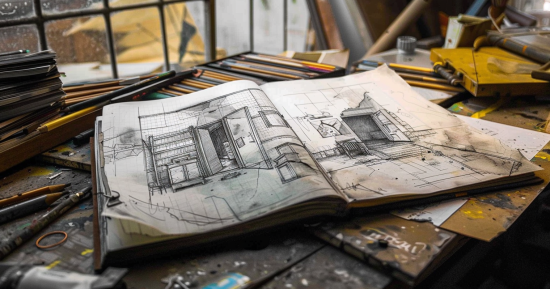Have you ever seen a painting or sculpture that made you wonder, “Who made this?” or “Where is this from?” Learning how to identify a work of art can be exciting, and easier than you think! Whether you’re a beginner or simply curious, this guide will walk you through simple steps to help you uncover the story behind any artwork.
Identify a Work of Art
First, you’ll want to gather as much information as possible about the artwork. Pay close attention to the details, such as the subject, colors, and style. In many cases, these elements can offer clues about the artist, period, or movement to which the artwork belongs. Additionally, don’t forget to check for signatures, inscriptions, or markings that can lead you to the artist or the artwork’s history.
Once you have collected this information, you can consult various resources and experts to further your understanding of the art piece. Reaching out to museum curators or art history professors can provide valuable insights. At the same time, artwork recognition apps and online databases may efficiently guide your quest for knowledge about the piece. Armed with this information, you’ll be well on your way to unveiling the story behind the artwork and truly appreciating its significance.
Step 1: Start with What You See

When trying to identify a work of art, the first thing to do is look closely. Ask yourself:
- What is the subject? (A person? A landscape? Something abstract?)
- What colors and shapes stand out?
- What style does it remind you of—realistic, abstract, modern?
Tip: Look for a signature or initials, often found at the bottom corners or on the back. These clues can point you to the artist or time period.
Helpful tools: Use your phone to take a clear photo, then try an art recognition app like Smartify, Magnus, or Google Lens. These tools often link to online databases with useful information.
Step 2: Know the Art Styles and Movements
To identify a work of art, it helps to understand basic art styles. Different periods and movements have signature looks:
Common Art Movements:
- Classical: Ancient Greek and Roman art with balanced, lifelike figures.
- Gothic: Elongated forms, religious themes, and dramatic architecture.
- Renaissance: Realistic human figures, use of perspective, focus on beauty.
- Baroque: Emotional, dramatic scenes with strong light and shadow.
- Romanticism: Nature, emotion, and individual expression.
- Impressionism: Loose brushwork, bright colors, focus on light and movement.
- Modernism: Abstract shapes, bold ideas, and experiments in form.
Each style gives clues about when and where the artwork may have been created.
You can also browse our articles about Art Styles.
Step 3: Look at Materials and Techniques
Understanding how the artwork was made also helps you identify it.
Common Mediums:
- Paintings: Oil, acrylic, or watercolor
- Sculpture: Bronze, stone, or wood
- Prints: Etching, lithography, screen printing
- Photography: Film or digital
Details like brushstrokes, surface texture, and even canvas type can reveal a lot about the artist’s process and time period.
Step 4: Analyze the Subject and Meaning

Ask these questions:
- What is happening in the artwork?
- Are there symbols or historical references?
- Does it remind you of a specific culture, religion, or event?
Research any symbols, clothing styles, or scenery that stand out. Books, museum websites, and art history blogs can all help.
Step 5: Check the History and Provenance
NextIf you’re trying to confirm if a piece is original or valuable, you’ll want to look into its provenance (the history of ownership). Ask for or look up:
- Exhibition catalogs
- Auction records
- Certificates of authenticity
- Sales receipts
Also, check for signatures or stamps on the back of paintings, sculptures, or frames. Keep in mind that forgeries do exist, so expert advice is important.
Step 6: Ask the Experts
Don’t hesitate to contact professionals who live and breathe the art world. Museum curators and art historians have deep knowledge of styles, artists, and historical context. They can often identify a piece or at least narrow down its origin and significance.
Art gallery owners and professional appraisers are also valuable resources—especially when dealing with privately owned works or when you suspect a piece may have market value. These experts can help you assess the piece’s authenticity, artistic importance, and estimated worth.
In addition, art consultants can offer broader advice. They’re trained to evaluate artworks for private collections, corporate installations, and exhibitions. Their input can help you better understand how a piece fits into the bigger picture of art history and collecting.
You can also turn to online communities. Art forums, collector groups, and even Reddit threads often feature passionate and experienced users willing to lend their knowledge. Upload a clear image, describe what you know, and let the community help you dig deeper.
Combining expert insight with your own research creates a stronger foundation for identifying and appreciating a work of art.
Bonus Tip: Use Technology to Your Advantage
In today’s digital world, there are many tools to help identify a work of art:
- Google Lens – Scan an image and search online
- ArtNet and MutualArt – Explore artist databases
- The Getty Provenance Index – Research artwork histories
Why Identifying Art Matters
Identifying a work of art is more than just learning a name or date, it’s about building a relationship with the artwork. When you know who made a piece, why they created it, and the context behind it, you connect more deeply with the story it tells.
Understanding an artwork’s origin can also increase your appreciation for the skill and emotion that went into it. You might notice details you overlooked before, like the way colors are blended, how space is used, or the emotion in a subject’s expression.
For collectors, proper identification ensures authenticity and value. For museum-goers, it adds layers of meaning. And for curious minds, it’s a gateway into history, culture, and creativity.
The more you practice identifying art, the more confident you become in recognizing different styles, periods, and artists. It’s a skill that enriches your experiences and opens up new ways of seeing the world around you.
FAQ – Identify a Work of Art
What is the first step to identify a work of art?
Start by looking at the subject, colors, style, and any signatures. Use image search tools or art apps to gather clues.
What does provenance mean in art?
Provenance is the history of who owned the piece, where it’s been displayed or sold, and any supporting documents that prove its authenticity.
Can I identify art using my phone?
Yes! Apps like Google Lens and Smartify let you take a picture and search online for matches and artist info.
Is it okay to ask experts for help?
Absolutely. Museum staff, gallery owners, and appraisers are often willing to share insights or recommend next steps.
Want to learn more? Start exploring, stay curious, and enjoy your journey through the art world!






